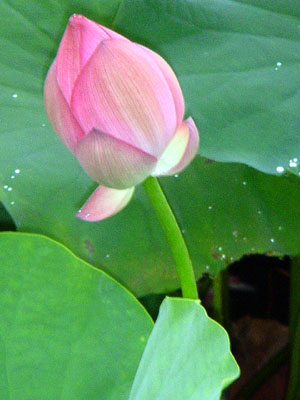In September of 2006 I took Lila on her first (and so far only) trip to Japan. One of my favorite places is the area around Ueno Pond, a well-known site from back in the days of Edo.
We arrived near sundown on the next-to-last day of our trip, and did some shooting with our tripods. The second shot is mine; the other two are from her camera, though I think I shot the one of the shrine. (The fine shot of the lotus is definitely hers.)

This is the Benten Shrine on the little island in Ueno pond. It is the starting point of the "Shichifukujin" (Seven Lucky Gods) pilgrimage I wrote about before. Benten is patroness of music and art, and the beauty of this shrine is testament to her power.

Here is a shot of the shrine through the riot of lotus leaves growing on the pond in that time of year. On this side of the pond you can't even see the pond!

Lila captured this beautiful shot of a lotus bud. In Buddhist iconography, this represents potential (the opened lotus is the fulfillment of that potential).
I have dozens more shots of this place; in the future, I'll show you the little causeway that leads to the shrine, with its cheesy kiosks and ancient monuments.



















